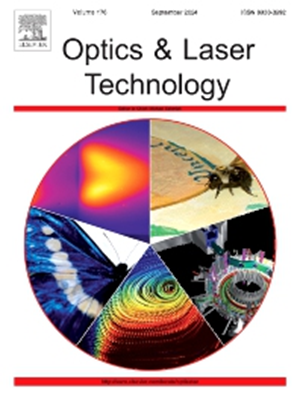Deep learning-assisted holo-tomographic flow cytometry with sparse data
IF 4.6
2区 物理与天体物理
Q1 OPTICS
引用次数: 0
Abstract
The integration of holo-tomographic flow cytometry represents an innovative approach that synergistically combines the strengths of both techniques. By exploiting the self-rotation of cells to capture multi-angle projection images, this method facilitates label-free, quantitative, and isotropic reconstruction of the refractive index (RI) distribution, offering a transformative perspective for high-throughput, three-dimensional (3D) cell analysis. Nevertheless, a significant challenge persists: achieving a balance between high throughput and sufficient sampling angles to ensure accurate RI reconstruction. To address the sparse-angle limitations imposed by high-throughput conditions, we proposed a physics-inspired neural network for RI distribution reconstruction under missing-angle scenarios. Our approach employed the filtered back-projection algorithm to reconstruct an initial RI distribution as the network’s input. Subsequently, a wave propagation model was used to compute the transmitted light field corresponding to the estimated RI distribution, which is compared to the experimentally measured light field to define the loss function. Through iterative training, the network refined the RI distribution until it converged to the reference reconstruction, without requiring any external training datasets, thereby enhancing the method’s versatility. We validated this approach by reconstructing the RI distributions of vacuole-containing ovarian cancer cells and colon cancer cells internalizing carbon nanoparticles, using 25%, 50%, and 75% of the total acquired phase images. The Feature Similarity Index was employed to evaluate the network’s performance quantitatively. By seamlessly integrating physical models with neural networks, this method introduces a novel paradigm for holo-tomographic flow cytometry, providing a pioneering solution for high-throughput 3D cell analysis.
基于稀疏数据的深度学习辅助全息层析流式细胞术
全息层析流式细胞术的整合代表了一种创新的方法,协同结合了两种技术的优势。通过利用细胞的自旋转来捕获多角度投影图像,该方法促进了折射率(RI)分布的无标记、定量和各向同性重建,为高通量、三维(3D)细胞分析提供了一个革命性的视角。然而,一个重大的挑战仍然存在:实现高通量和足够的采样角度之间的平衡,以确保准确的RI重建。为了解决高通量条件下的稀疏角度限制,我们提出了一种物理启发的神经网络,用于缺失角度场景下的RI分布重建。我们的方法采用滤波后的反投影算法来重建初始RI分布作为网络的输入。随后,利用波传播模型计算出估计的RI分布对应的透射光场,并将其与实验测量的光场进行比较,定义损失函数。通过迭代训练,网络对RI分布进行细化,直至收敛到参考重构,无需任何外部训练数据集,增强了方法的通用性。我们通过使用25%、50%和75%的总获得相图像重建含有空泡的卵巢癌细胞和内化碳纳米颗粒的结肠癌细胞的RI分布,验证了这种方法。采用特征相似度指数定量评价网络的性能。通过将物理模型与神经网络无缝集成,该方法为全息层析流式细胞术引入了一种新的范例,为高通量3D细胞分析提供了开创性的解决方案。
本文章由计算机程序翻译,如有差异,请以英文原文为准。
求助全文
约1分钟内获得全文
求助全文
来源期刊
CiteScore
8.50
自引率
10.00%
发文量
1060
审稿时长
3.4 months
期刊介绍:
Optics & Laser Technology aims to provide a vehicle for the publication of a broad range of high quality research and review papers in those fields of scientific and engineering research appertaining to the development and application of the technology of optics and lasers. Papers describing original work in these areas are submitted to rigorous refereeing prior to acceptance for publication.
The scope of Optics & Laser Technology encompasses, but is not restricted to, the following areas:
•development in all types of lasers
•developments in optoelectronic devices and photonics
•developments in new photonics and optical concepts
•developments in conventional optics, optical instruments and components
•techniques of optical metrology, including interferometry and optical fibre sensors
•LIDAR and other non-contact optical measurement techniques, including optical methods in heat and fluid flow
•applications of lasers to materials processing, optical NDT display (including holography) and optical communication
•research and development in the field of laser safety including studies of hazards resulting from the applications of lasers (laser safety, hazards of laser fume)
•developments in optical computing and optical information processing
•developments in new optical materials
•developments in new optical characterization methods and techniques
•developments in quantum optics
•developments in light assisted micro and nanofabrication methods and techniques
•developments in nanophotonics and biophotonics
•developments in imaging processing and systems

 求助内容:
求助内容: 应助结果提醒方式:
应助结果提醒方式:


